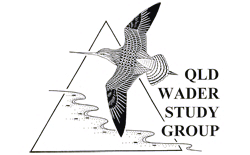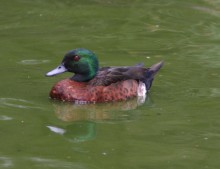Site information:
The expansive sand and mudflats in Deception Bay are important feeding grounds for many species of wader, with the area adjacent to the southern section of the Esplanade being the most productive. This is one of only a few sites in Moreton Bay where Red-necked Avocet are regularly seen, most reliably between June and October; in August 1999, a flock of 501 birds was recorded at the lagoon roost site. Opportunities also exist to compare Bar-tailed Godwit with Black-tailed Godwit, the latter being most commonly seen here and at Lytton in Moreton Bay. Another rarity, Asian Dowitcher, has also been recorded at this site. On the turning tide the best vantage point is at a small park on Esplanade South; you can park here or along the seawall. Walking onto the mudflats is not recommended, as the substrate is very soft and hazardous in places.
How to get there: This site is situated about 35 km north of Brisbane. From Brisbane take the Bruce Highway north. At 9.4 km from the Pine River Bridge exit at Boundary Road, turn right, cross the highway overpass and travel north-east on Boundary Road until the traffic lights at the Lipscombe Road/Deception Bay Road intersection at 4.4 km. Boundary Road becomes Lipscombe Road at 2.9 km from the highway. Turn right at the traffic lights and continue along Deception Bay Road turning left into Webster Road at 6.6 km. These will be the fourth set of traffic lights from Lipscombe Road. The waters of Deception Bay will be straight ahead and the park about 100 m after you turn right from Webster Road into Esplanade South.
Amenities/access: Covered picnic tables, a barbeque, children’s playground and toilets are located in Cross Street less than 1 km from South Esplanade. There is also a public toilet block situated about 400 m to the north via a walkway from South Esplanade to the Esplanade. This site is easily accessible for disabled people.
Site coordinates: Lat 27º 11’ 51” S, Long 153º 02’ 07” E.
Wader species: Black-tailed Godwit, Bar-tailed Godwit, Whimbrel, Eastern Curlew, Common Greenshank, Terek Sandpiper, Grey-tailed Tattler, Asian Dowitcher, Great Knot, Red Knot (September – December), Red-necked Stint, Curlew Sandpiper, Pied Oystercatcher, Black-winged Stilt, Red-necked Avocet (June – October) and Masked Lapwing.
Other species: Chestnut Teal, Gull-billed Tern, Caspian Tern, Little Egret, White-faced Heron and Striated Heron.

